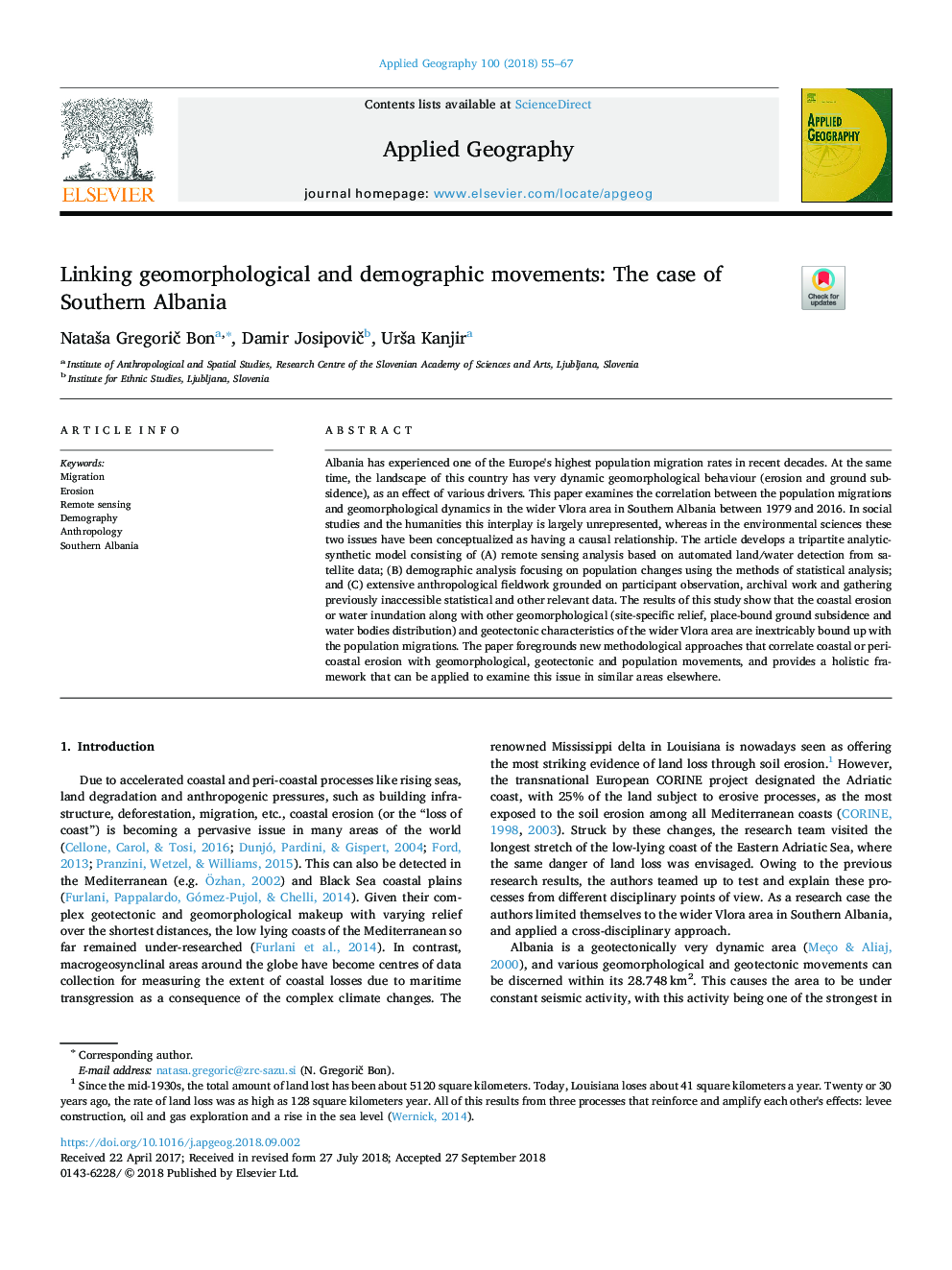| Article ID | Journal | Published Year | Pages | File Type |
|---|---|---|---|---|
| 11028356 | Applied Geography | 2018 | 13 Pages |
Abstract
Albania has experienced one of the Europe's highest population migration rates in recent decades. At the same time, the landscape of this country has very dynamic geomorphological behaviour (erosion and ground subsidence), as an effect of various drivers. This paper examines the correlation between the population migrations and geomorphological dynamics in the wider Vlora area in Southern Albania between 1979 and 2016. In social studies and the humanities this interplay is largely unrepresented, whereas in the environmental sciences these two issues have been conceptualized as having a causal relationship. The article develops a tripartite analytic-synthetic model consisting of (A) remote sensing analysis based on automated land/water detection from satellite data; (B) demographic analysis focusing on population changes using the methods of statistical analysis; and (C) extensive anthropological fieldwork grounded on participant observation, archival work and gathering previously inaccessible statistical and other relevant data. The results of this study show that the coastal erosion or water inundation along with other geomorphological (site-specific relief, place-bound ground subsidence and water bodies distribution) and geotectonic characteristics of the wider Vlora area are inextricably bound up with the population migrations. The paper foregrounds new methodological approaches that correlate coastal or peri-coastal erosion with geomorphological, geotectonic and population movements, and provides a holistic framework that can be applied to examine this issue in similar areas elsewhere.
Related Topics
Life Sciences
Agricultural and Biological Sciences
Forestry
Authors
NataÅ¡a GregoriÄ Bon, Damir JosipoviÄ, UrÅ¡a Kanjir,
